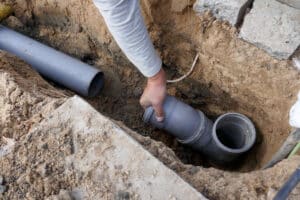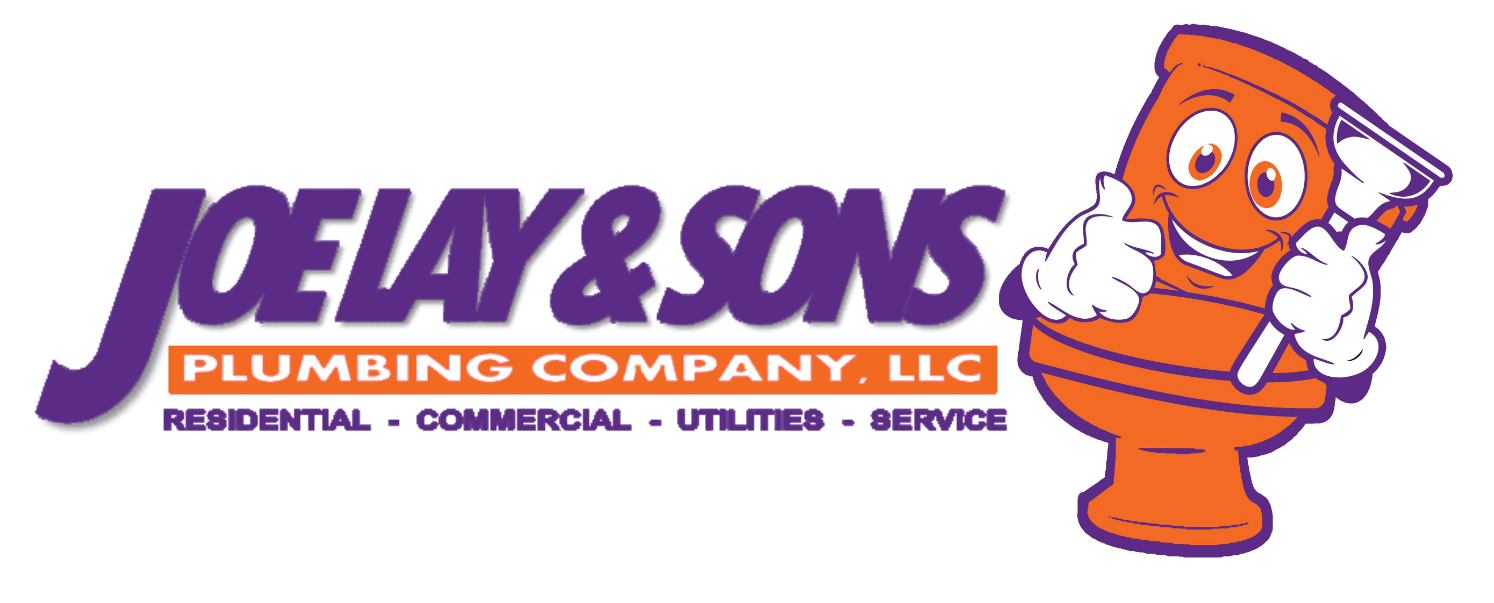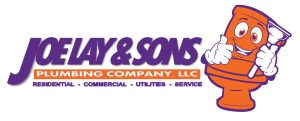 Sewer line issues are among the most dreaded plumbing problems a homeowner can face. A broken or blocked sewer line can lead to devastating consequences, from foul odors and water backups to costly damage to your property. However, with the right knowledge and proactive approach, you can identify and address these problems before they spiral out of control. In this comprehensive guide, we’ll explore the common signs of sewer line trouble, the steps to diagnose the issue, and the strategies to effectively repair or replace your sewer line.
Sewer line issues are among the most dreaded plumbing problems a homeowner can face. A broken or blocked sewer line can lead to devastating consequences, from foul odors and water backups to costly damage to your property. However, with the right knowledge and proactive approach, you can identify and address these problems before they spiral out of control. In this comprehensive guide, we’ll explore the common signs of sewer line trouble, the steps to diagnose the issue, and the strategies to effectively repair or replace your sewer line.
Understanding Sewer Line Basics
Types of Sewer Line Materials
Sewer lines can be constructed from a variety of materials, each with its own strengths and weaknesses. Older homes may have concrete, clay, or tile pipes, while newer installations often feature no-hub cast iron, plastic (PVC or ABS), or PVC 3034. Understanding the composition of your sewer line can help you anticipate potential issues and plan for appropriate repair or replacement methods.
Common Causes of Sewer Line Breaks
Sewer line problems can arise from a multitude of factors, including:
-
- Tree root intrusion: The expansive root systems of large trees can gradually penetrate and crush sewer pipes over time.
- Soil shifting and settling: Changes in the soil composition or ground movement can put stress on the sewer line, leading to cracks and breaks.
- Corrosion and deterioration: Older pipes made of materials like concrete or clay are susceptible to gradual wear and tear, especially in areas with harsh environmental conditions.
- Improper installation or poor workmanship: Sewer lines that were not installed correctly or to code may be prone to early failures.
- Damage from construction or excavation: Nearby digging or heavy equipment can inadvertently damage underground sewer lines.
Recognizing the Warning Signs
Foul Odors
One of the most obvious indicators of a sewer line issue is the presence of persistent, unpleasant odors emanating from your drains or yard. These pungent smells are typically caused by sewage leaking from a damaged or blocked pipe.
Slow Draining Fixtures
If multiple drains in your home, such as sinks, showers, or toilets, are slow to drain or frequently clog, it may signal a blockage or breakage in the main sewer line. Isolated clogs are common, but widespread drainage problems often point to a more significant sewer line problem.
Gurgling Sounds
Unusual gurgling or bubbling noises coming from your drains, especially after flushing a toilet or running water, can indicate a sewer line issue. This is caused by air being trapped and released due to a blockage or break in the pipe.
Sewage Backups
When a sewer line is blocked or damaged, sewage can back up into your home, manifesting as water overflowing from toilets, sinks, or basement drains. This is a clear sign that immediate action is required to address the problem.
Lush, Green Grass Patches
Sewage leaking from a broken sewer line can act as a natural fertilizer, causing the grass in certain areas of your yard to appear unusually lush and green. This can be a telltale sign of an underground sewer line issue.
Sinkholes or Depressions
Erosion caused by a leaking sewer line can lead to the formation of sinkholes or depressions in your yard. If you notice any sudden changes in the landscape, it’s essential to investigate further.
Pest Infestations
A damaged sewer line can attract pests such as rats, mice, or insects, as they are drawn to the moisture and nutrients provided by the leaking sewage.
Diagnosing the Problem
Performing a Visual Inspection
The first step in diagnosing a sewer line issue is to conduct a thorough visual inspection of your property. Look for any obvious signs of damage, such as cracks in the foundation, wet spots in the yard, or unusual growths of vegetation. Additionally, check for any visible access points, such as cleanouts or manholes, that can provide a window into the condition of the sewer line.
Utilizing Sewer Camera Inspections
While a visual inspection can be helpful, the most accurate way to assess the condition of your sewer line is to schedule a professional camera inspection. A specialized camera is inserted into the sewer line, allowing the technician to see the interior of the pipe and identify any problems, such as cracks, blockages, or root intrusion.
Determining Responsibility
Understanding who is responsible for the repair or replacement of the sewer line is crucial. In most cases, the homeowner is responsible for the section of the sewer line that runs from the house to the property line or the connection point with the municipal sewer system. The local municipality or utility company is typically responsible for the sewer line from the property line to the main sewer in the street.
Repairing or Replacing the Sewer Line
Trenchless Sewer Line Repair
Advances in plumbing technology have led to the development of trenchless sewer line repair methods, which can often be completed without the need for extensive excavation. These techniques, such as pipe relining or pipe bursting, involve accessing the sewer line through small access points and repairing or replacing the pipe from the inside, minimizing the impact on your property.
Traditional Sewer Line Replacement
In some cases, the sewer line may be too severely damaged or outdated to be repaired, and a full replacement may be necessary. This typically involves digging a trench to expose the entire length of the sewer line and replacing it with new piping. While more disruptive, this approach can provide a long-term solution and may be necessary for certain types of sewer line materials or extensive damage.
Permits and Inspections
Regardless of the repair or replacement method, it’s crucial to obtain the necessary permits and ensure that the work is properly inspected. This not only ensures compliance with local regulations but also helps to protect your investment and ensure the safety and functionality of the sewer line.
Preventing Future Sewer Line Issues
Proper Maintenance and Cleaning
Regular maintenance and cleaning of your sewer line can help prevent future issues. This may include having the line professionally inspected and cleaned on a periodic basis, as well as taking steps to avoid common causes of blockages, such as disposing of grease and hair properly.
Protecting Against Tree Root Intrusion
If you have large trees or shrubs near your sewer line, it’s essential to take proactive measures to prevent root intrusion. This may involve installing root barriers or considering the use of trenchless pipe relining techniques that can create a barrier against future root growth.
Upgrading Older Sewer Lines
If your home has an older sewer line made of materials like concrete or clay, it may be worth considering a proactive replacement or relining project, even if no immediate issues are present. Upgrading to more durable, modern materials can help prevent costly and disruptive sewer line failures down the line.
Sewer line problems can be a significant headache for homeowners, but with the right knowledge and proactive approach, you can effectively diagnose and address these issues. By understanding the common signs of sewer line trouble, utilizing professional inspection and repair services, and implementing preventative maintenance strategies, you can safeguard your home and avoid the devastating consequences of a broken sewer line. Remember, addressing sewer line problems early on is the key to minimizing disruption and protecting the value of your property.
Contact Us (859-384-3467) for a Consultation
—
 About Joe Lay & Sons Plumbing
About Joe Lay & Sons Plumbing
Serving Northern Kentucky and Greater Cincinnati Since 1970!
Joe Lay & Sons Plumbing can quickly and efficiently handle your plumbing requests with little disruption to your day-to-day! Our team of experienced and skilled plumbers can handle most residential and commercial plumbing problems. We want to reduce your stress and save you money. We keep our prices competitive, so you can use our services without breaking the bank.
> Learn More

 About Joe Lay & Sons Plumbing
About Joe Lay & Sons Plumbing